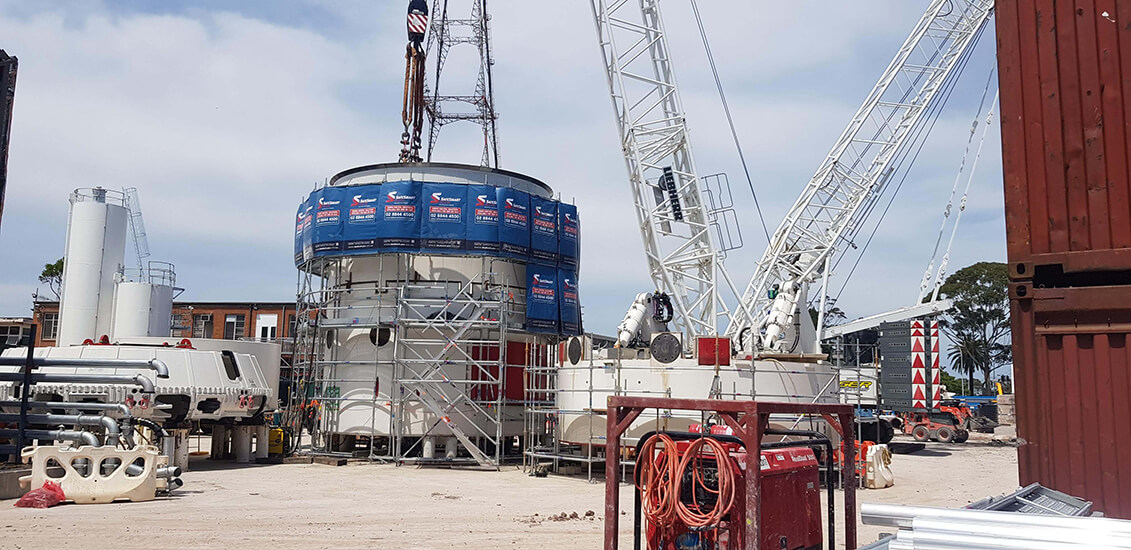Rock breakers: the mighty muscle behind demolition dreams and excavation glory on Australian job sites. While these hydraulic heavyweights can smash through concrete like a hot knife through butter, they also come with a fair share of risks that deserve your full attention. Mastering proper safety protocols isn’t just ticking boxes – it’s protecting your crew, your machinery, and your bottom line from unwanted “ka-booms” and expensive holdups.
Understanding the Hazards
Let’s not sugar-coat it: rock breakers unleash brute force and relentless vibration, turning solid ground into rubble, and your worksite into a hazard zone. Flying debris is public enemy number one for anyone standing too close (operators and onlookers alike), and the racket these machines make is loud enough to make your eardrums beg for mercy. A single misplaced strike could send buildings wobbling or unsuspecting pipes running for cover.
Then there’s the not-so-friendly hydraulic system, capable of spraying scorching oil at high pressure, which is neither a spa treatment nor great for the environment. And let’s not forget those persistent vibrations; you don’t want hand-arm vibration syndrome as your worksite souvenir.
Pre-Operation Safety Inspections
Before unleashing your rock breaker, channel your inner detective. Hunt for hidden leaks, cracks, or loose fittings on every hydraulic hose. Check those mounting points like you’re inspecting a suspicious bridge – you want everything tight and perfectly aligned with the carrier.
Don’t stop there. Put every safety feature to the test: emergency stops, pressure valves, the whole parade. And double-check that your carrier’s stability systems are up to snuff; nothing ruins a day faster than an expensive machine taking a nosedive mid-job.
Personal Protective Equipment Requirements
Think of PPE as your daily superhero costume – mandatory and non-negotiable. Helmets, high-vis vests, and steel-toed boots are your starter pack. Tack on impact-resistant goggles for shrapnel defence and hearing protection for the ongoing rock concert at your feet.
Dusty out? Wrap up with a face shield. Whatever you wear, make sure it’s approved, up to scratch, and not something you found on the back of the ute from 2008.
Safe Operating Procedures
Draw a clear ring around the danger zone – a 10-metre radius minimum, because nothing says “safety first” like a healthy respect for flying rubble. Make sure your machine is parked on steady, level ground, and keep a cautious distance from anything you’d rather not collapse (think trenches, wires, neighbouring structures).
Smash with style, not speed. Steady, controlled blows minimise surprise projectiles and extend your equipment’s life. Schedule regular breaks – because tired operators are more likely to break more than just rocks.
Training and Professional Support
If you think anyone can hop into a cab and wield a rock breaker, think again. Only operators with legit, specific training need apply. Many smart companies opt for affordable rock breaker rental paired with operator services: it saves money and adds an extra layer of expertise, especially for tricky or short-term gigs.
Stay sharp with regular refresher courses – safety trends evolve, so your training should too. Thoroughly document every qualification for peace of mind (and smooth sailing if the inspectors drop by).
Prioritising Safety Every Day
When it comes to rock breaker safety, an ounce of prevention is worth a tonne of concrete. These machines work wonders when handled by the book, but cutting corners? That’s how legends (and not the good kind) are made.
Remember, quality rental companies often bundle highly trained operators with their gear – an ace up your sleeve when tackling specialised projects. Keep your teams clued-up, enforce best practices, and you’ll enjoy all the benefits of high-powered demolition, minus the drama. Stay safe, stay smart, and let your rock breaker do the heavy lifting – on your terms.

